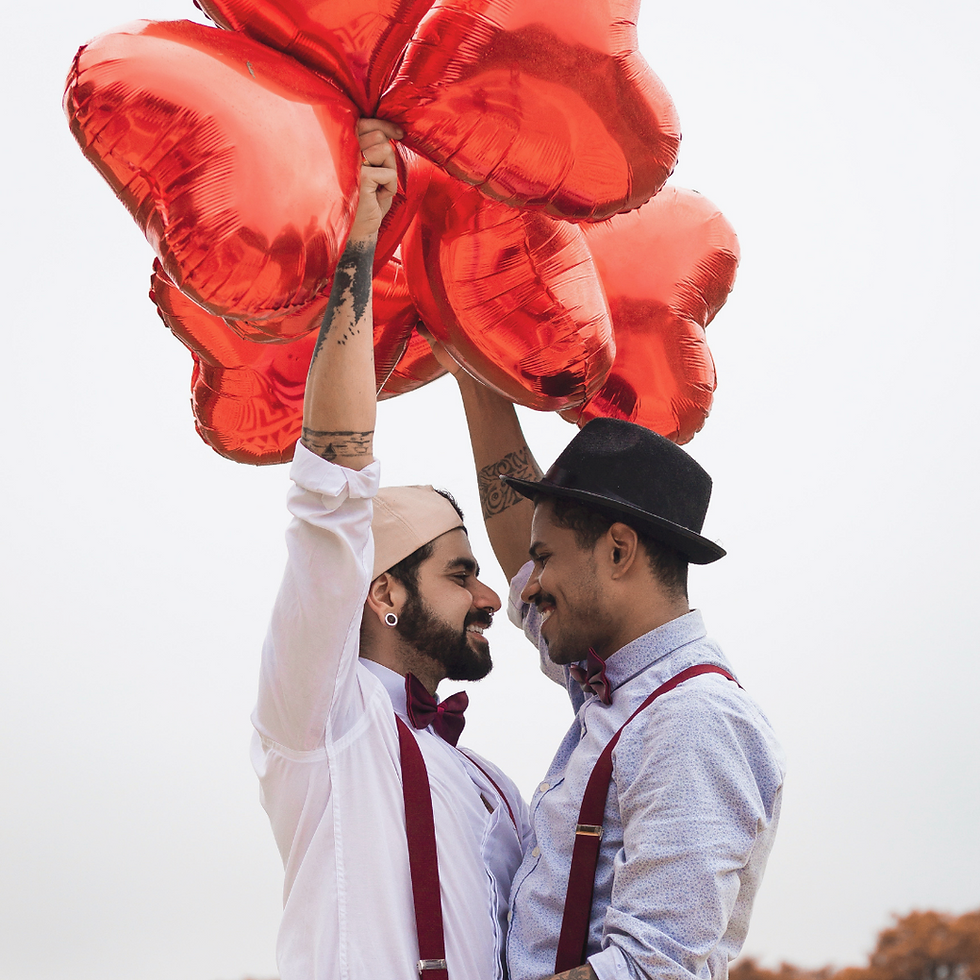
How LGBTQ culture influences mainstream fashion
Oscar Wilde once wrote, ‘It is only the shallow people who do not judge by appearances. The true mystery of the world is the visible, not the invisible’ (A Picture of Dorian Gray). As one of the Queer fashion pioneers of his time, Wilde believed that fashion is a language, a language that is particularly prevalent in the Queer community.
Despite it being somewhat cliché to say that fashion is a language, what a person wears does communicate something about their personality and therefore they're automatically placed in a subgroup within the collective subconscious. Fashion acts as a way of social differentiation, segregating people into subcultures based on what a certain style signifies about a person’s lifestyle, as Fred Davis notes in his book Fashion, Culture, and Identity.
For hundreds of years, Queer culture has greatly influenced the fashion world, from Oscar Wilde to the drag houses of the 1980s, to 21st-century high fashion, with designers such as Christian Dior and Alexander McQueen. For many queer people, myself included, fashion is a way of empowerment that allows us to explore and express our sexuality and gender through an unspoken, yet mutual, language.
While queer fashion is often seen as high drama, flamboyant, and highly creative, the fashion industry utilises queer culture as inspiration for anything, from catwalk to high street brand.
Fashion and Queer Women
In high fashion, the influence of queer culture is prominent. You don’t have to look hard to find that queer culture and fashion are intrinsically intertwined. Take the October 2021 Luxx Report from The Times, in which androgynous fashion and ‘suiting’ appear to be the dominant trends.
Designers such as Tom Ford and Giorgio Armani place emphasis on the power of the suit as it is both the perfect choice for going back to the office or for making a statement. While women’s androgynous dress is increasingly common, with the recent trend of blazers, oversized tees and jeans, and the suit serving the ultimate 'girlboss' energy, the industry seems to forget the pioneers for this who were the queer women of the 1930s and ’40s.
Post World War II was a turning point in terms of socio-cultural transformation where women now played larger roles in society after being recruited during the war effort. Skirts and housewifery were replaced by overalls and manual labour, and there was a mass absorption of masculinity which empowered women across the country. While for some, this masculine fashion was merely practical, for many queer women it allowed them to explore their gender in a way which previously was not possible.
As a queer woman whose style certainly fits into androgynous fashion subculture, there is something satisfying about the way I choose to present myself symbolises my sexuality.
Drag Culture, Queer spaces and Fashion
Drag culture also has a huge influence over the fashion industry, particularly catwalk shows and events such as the Met Gala, where creativity and flare are needed. While drag has been around for hundreds of years, drag from the 1960s to the '80s, with legend such as Crystal Labeija, founder of The House of Labeija, played a pivotal role in fashion.
Drag balls were places of community which offered safety and a family for LGBTQ youth who were exiled from their families. Drag Legends such as Pepper Labeija, who was the Mother of the House of Labeija after Crystal, offered support and guidance to young homeless LGBTQ people.
Between the 1960s and the 1980s, drag culture was reshaped drastically, and over the period of those decades became increasingly inclusive. During the '60s, drag was all about looking like a showgirl with head and tail pieces, in the '70s drag became more about looking like a movie star such as Marilyn Monroe, and in the '80s it became about looking like a models such as Beverly Johnson. This meant that more people were able to partake in drag and also meant that the categories became increasingly inclusive and varied.
During this time nightclubs, gay bars, and balls were used as creative spaces where ideas were shared. The influences of these places can still be seen today in gay culture and in the fashion industry as the dominant image that surrounds London’s gay culture is that of disco, nightclubs, and drag.
Although this is now changing due to the fact that culture and fashion are beginning to be heralded by the rise of social media and the internet. Ideas are now being shared online rather than within these exclusive spaces, as Another Man magazines' Rob Nowill argues.
Fashion and Technology
In modern day society the advancement of technology, and in particular the introduction of social
media, has completely transformed how consumers are exposed to fashion. Whereas previously fashion
was dictated by brands, platforms such as Instagram and Pinterest have made it increasingly about trends. This is cultivated through influencers who have the ability to put out content containing styles seen by millions, subsequently exposing people to new brands and ways in which to wear them.
Many people are inspired by these trends, some originating from the Queer community, whom embrace different aesthetics and trends of the past to create new looks, which are used by all. For example, Harry Styles became the first non-female cover star in Vogue’s 128- year history, with his cover shoot showing him to wear a variety of dresses and stereotypically feminine clothing. This embracement of the queer aesthetic by those outside of the community has not only established new fashion developments but has made society more accepting of the LGBTQ community.
People like myself are free to express themselves through clothing however they wish, which despite still carrying some stigma, unlike the past, it is no longer viewed as a privilege, but an individual’s right.
コメント